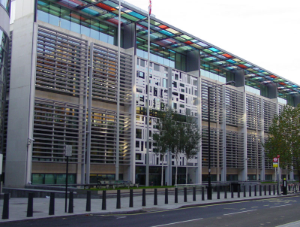Arrivals by air down 99% from 2019, entry clearance visa applications plummeted to just 250 in April 2020
As some UK Visa and Citizenship Application Centres (UKVCAS) begin the process of reopening today, the Home Office on Thursday published a brief statistical report detailing the impact Covid-19 has had on the immigration system.
 Image credit: UK GovernmentYou can download the 11-page report here.
Image credit: UK GovernmentYou can download the 11-page report here.
It provides a high-level overview of the key trends affecting the UK immigration system following the outbreak of the Covid-19 pandemic. As expected, very large falls are recorded across the board.
The number of arrivals by air to the UK fell from 7.1 million in January 2020 to just 112,300 in April, 99% down on the number of arrivals by air in April 2019.
Entry clearance visa applications in March 2020 fell to 129,000, less than half the 281,000 recorded in March 2019. In April 2020, entry clearance visa applications plummeted to just 250 (for all non-Chinese nationals). The number of decisions on applications fell to 145,000 in March 2020 compared to 248,000 in March 2019. Fewer than 100 decisions were made in April 2020.
The number of grants of extensions of leave to remain in the UK dropped 77% in April 2020 compared to April 2019.
In the first four weeks of lockdown since 23 March, asylum applications fell to 800, 69% down on the 2,500 applications recorded in the four weeks preceding lockdown
The number of people held in immigration detention centres was also down sharply - from 1,278 at the end of December 2019 to 313 at the start of May 2020. The Home Office also notes that since 23 March 2020, 295 people entered immigration detention, of which the majority (231) were clandestine entrants held for processing and later dispersed through appropriate routes.
The Home Office says its report is a one-off release and the data it contains is provisional, subject to change and is not quality assured to the same standard as regular National Statistics releases.
On Friday, the Migration Observatory at the University of Oxford published a short new report exploring the profile of migrants in the UK's key worker population during the Covid-19 crisis.
You can read it online here.
It notes: "Overall, migrant workers represent 17% of the key workforce, which is exactly the same share that they have of the total labour force in the UK. However, the share of key foreign-born workers is higher in specific sectors of the economy. For example, non-EU born workers represent 10% of the British labour force, but they comprise 19% of the key workforce in the IT and communications sector and 16% in the health sector. EU born workers comprise the 7% of the workforce, but they are over-represented among key workers in the manufacturing sector (22%), in the scientific and professional sector (11%) and in the transport and storage industries (11%)."
The report concludes: "The role migrants have played in the UK throughout the Covid-19 crisis has been hugely important. Key workers – both migrants and the UK-born – have put themselves in harm's way, saving lives and keeping basic services functioning. In recent months we have seen a shift in attitudes towards migrants – especially towards those in low-skilled key jobs, which have typically been negative … – but proposed post-Brexit policies are still largely focussed on reducing access to the UK for lower waged and lower-skilled EU migrants – which would certainly include some key workers."